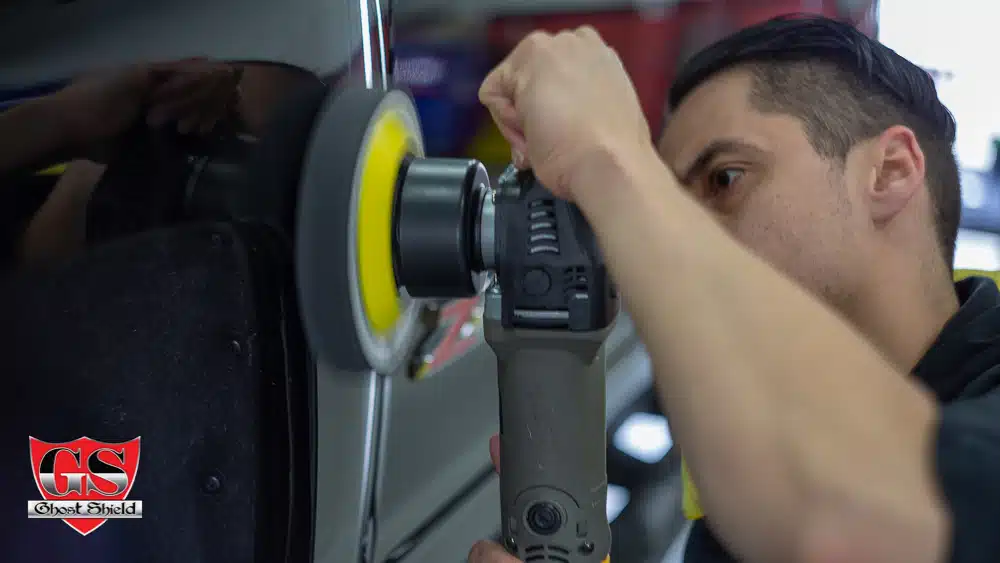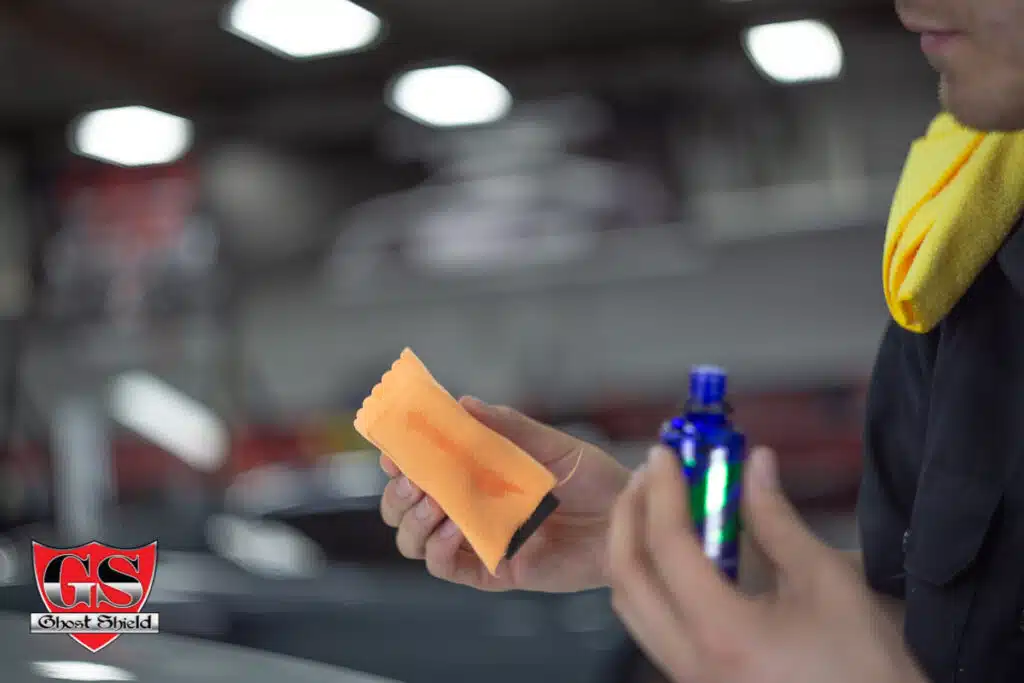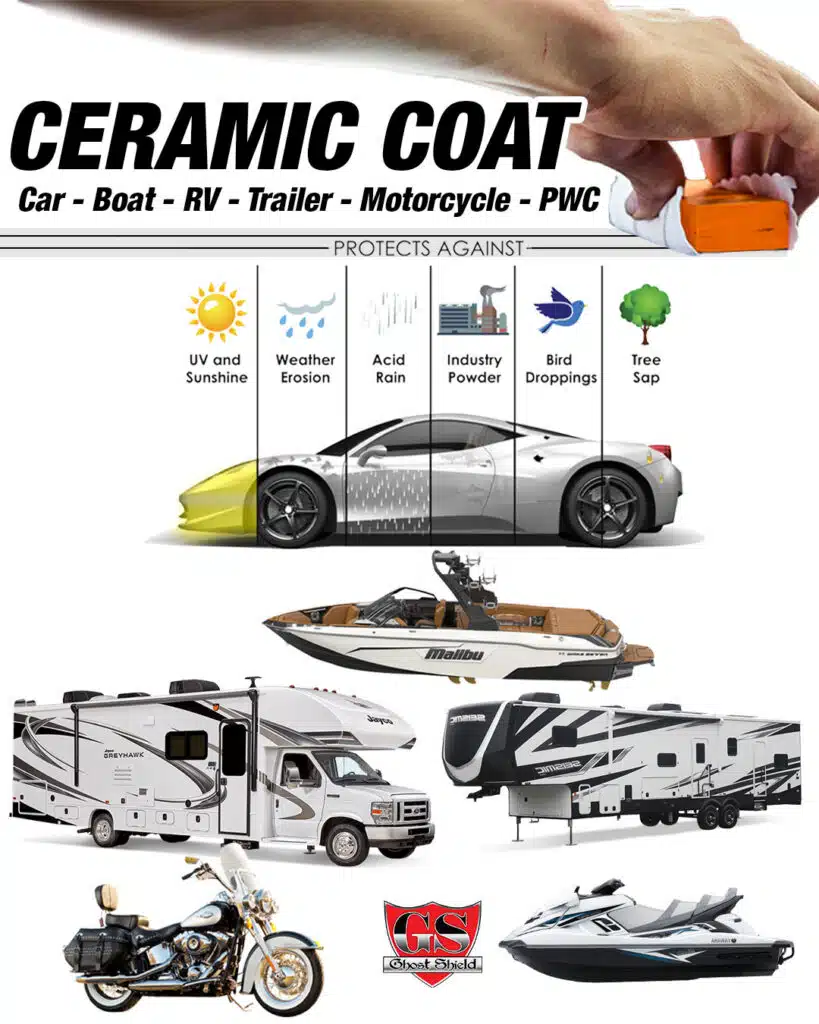If you can buy ceramic coatings yourself from Amazon or online stores, why not save money and apply it yourself?
There is a multitude of reasons why that would might be bad idea unless you have extensive detailing and paint correction experience. Here are the following reasons why you shouldn’t install the coating yourself, and just what ceramic coating is.
What is Ceramic Coating?
A liquid coating that utilizes nanotechnology to provide a completely invisible layer of protection. Nanoparticles, when applied to the surface, seal all the pores making the surface extremely glossy, hydrophobic, and UV resistant.
The nano-coating forms a semi-permanent bond with the surface of the vehicle, resulting in a “sacrificial” layer.
The ceramic coating contains synthetic protection agents in it. It provides protection from contaminants as well as a shiny, and glossy finish to your vehicle by bonding to the paint. These products are called semi-permanent because they can be removed only through “cutting” aka polishing it off the vehicle with abrasive polish or wearing off naturally over years.
Before and After Ceramic Coating
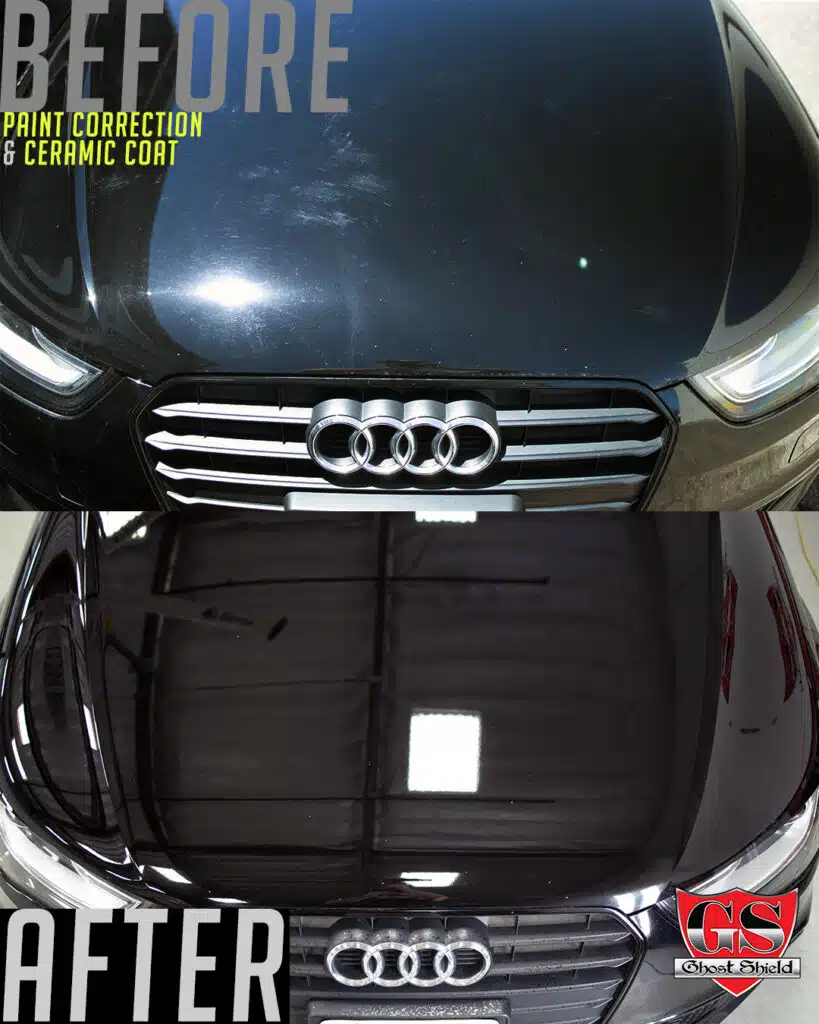
Ceramic coating and paint correction are popular services that can effectively restore and protect a vehicle’s paint job, making it look brand new.
The ‘Correct’ Process to Proper Ceramic Coating
Here’s how they work together:
1. Paint Correction: This process involves the meticulous removal of surface imperfections such as swirl marks, light scratches, oxidation, and water spots. Using specialized polishing compounds and professional tools, paint correction smooths out the clear coat, enhancing the depth and gloss of the original paint. When people search for this service, they might use terms like “scratch removal,” “car paint polishing,” or “auto paint restoration.”
2. Ceramic Coating: After paint correction, applying a ceramic coating offers long-term protection and a high-gloss finish. The coating forms a semi-permanent bond with the paint, acting as a shield against UV rays, chemical stains, and contaminants while also making the car easier to clean. Searches for this often include “ceramic paint protection,” “best ceramic coating for cars,” or “paint sealant for cars.”
Benefits of Paint Correcting before Ceramic Coat:
- Enhanced Shine and Clarity: Paint correction maximizes the paint’s natural shine, while the ceramic coating adds an ultra-glossy, hydrophobic layer that enhances the reflective quality.
- Durability: Ceramic coating extends the life of the newly corrected paint by protecting it for months or even years.
- Ease of Maintenance: The hydrophobic nature repels water and prevents dirt buildup, making washing and maintenance simpler.
More on this on our Ceramic Coat Page
Step 1: The car needs to be properly prepped
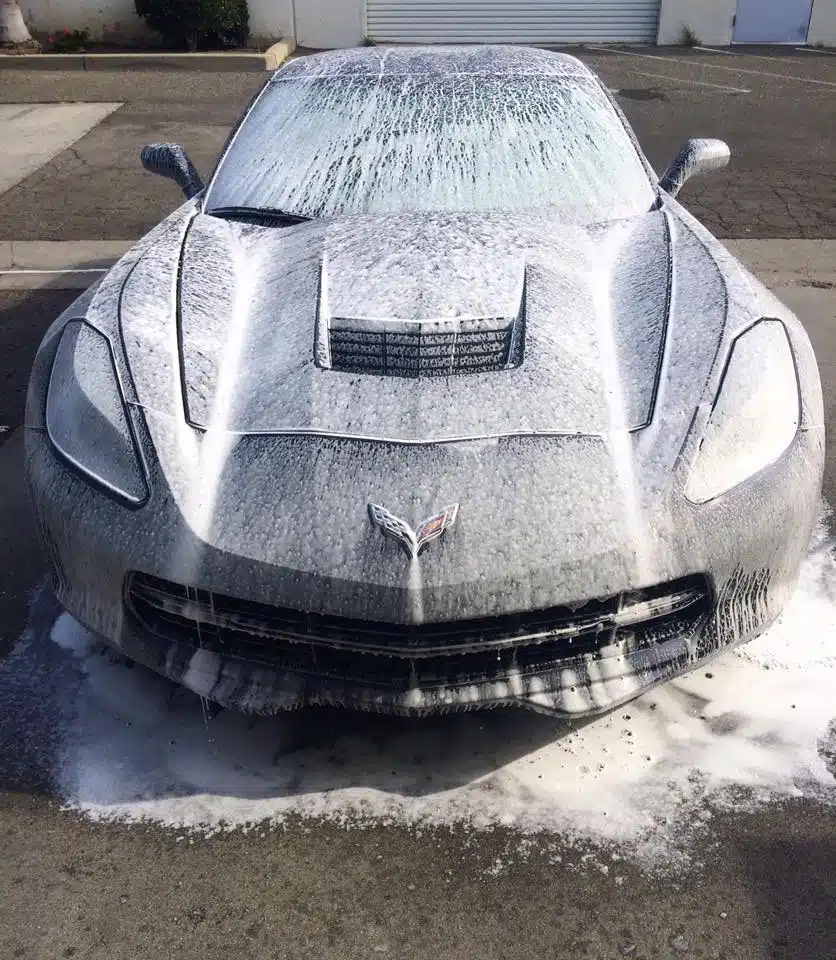
In order to get the car ready, it needs to be properly washed as the first step. This includes a thorough pressure wash, making sure to get all the crevices where dirt hides, to get it exceptionally clean, using the proper soap, and removing of contaminants from the paint. You will want to either use the two-bucket system or a grit guard in the bucket. The ceramic coating will only highlight and make more obvious any imperfections or contaminants missed.
Removing contaminants can range from using Iron-Off to needing extensive claying. Even brand-new cars need proper prepping before the ceramic coating is installed, as they sit on the car lot exposed to the sun, elements, and dirt. But it is important to remove anything from the paint before installing the ceramic coating to achieve the perfect finish.
Step 2: The car needs to be properly detailed and the paint corrected
If not done properly the clear coat and even the paint can be damaged in the process. The paint can come out looking scratched and dull. The clear coat can become uneven or hazy. You could even entirely polish off your already thin clear coat leaving exposed paint.
Proper and well-trained detailers also use the best materials available. You wouldn’t want to risk the clear coat or the paint by using cheap materials or tools. You will also want to make sure you know how to use all the products and tools before using them on a vehicle. Another important factor is ensuring that you are doing all this in an enclosed location with exceptional lighting. Generally, it is always recommended to have a vehicle professionally detailed and paint corrected to ensure the clear coat and paint are not damaged in the process.
Step 3: Application of Ceramic Coating
What happens when ceramic coating is improperly applied? The ceramic coating “flashes” and has a short window to properly wipe the coating off. Failing to do so means it comes out foggy looking, streaked, and can also bubble leaving behind a difficult-to-fix situation. Then the only way to fix this would be to cut down the coating. Another issue for those new to applying ceramic coatings is an uneven coating. When improperly applied it can come out with raised spots, or entire panel sections missed.
Good detail shops will be well-lit and extremely clean. Doing the ceramic coating in your garage, if you lack proper lighting, you would need to back the vehicle in and out to check the coating. Moving the vehicle in and out can cause the still not cured ceramic coating to get dirt, debris, or other contaminants in it. And once cured the coating is hard to fix.
Advantages of Ceramic Coat
Ceramic coating offers several key advantages for vehicle owners looking for enhanced paint protection and aesthetics. Here are the main benefits:
-
Long-Lasting Protection Ceramic coatings create a durable layer that bonds with the car’s paint, offering long-term protection that can last for years. This makes it more robust than traditional waxes or sealants, which typically need frequent reapplication.
-
Hydrophobic Properties One of the most popular features of ceramic coating is its hydrophobic effect, which repels water and other contaminants. This means that water beads off the surface and carries dirt and grime away, making cleaning easier and reducing water spots.
-
Enhanced Gloss and Shine Ceramic coatings add an impressive, deep gloss to the paint job, enhancing the car’s appearance. The coating improves the reflective properties of the paint, giving the vehicle a mirror-like finish that many car enthusiasts love.
-
UV and Oxidation Protection Exposure to the sun can cause paint to fade or oxidize over time. Ceramic coating provides a layer of protection against harmful UV rays, preventing paint from deteriorating and maintaining its original color.
-
Chemical Resistance The coating acts as a barrier against various chemicals, such as acidic contaminants and road salts. This prevents these substances from bonding with the paint, reducing the risk of corrosion or staining.
-
Scratch Resistance While not completely scratch-proof, ceramic coatings do offer a level of resistance to minor scratches and swirl marks that can occur during regular car washes or due to environmental factors.
-
Easier Cleaning and Maintenance Thanks to its non-stick properties, ceramic coating prevents dirt, grime, and other contaminants from sticking to the surface. This makes regular washing much simpler, as most of the debris can be easily rinsed off.
-
Cost-Effective Over Time Though the initial application cost can be higher than other types of protection, the long-lasting nature of ceramic coatings reduces the need for frequent detailing and waxing, making it more cost-effective over time.
-
Resale Value Cars with well-maintained paint and protection often retain higher resale value. The application of a ceramic coating can keep a vehicle looking newer for longer, which is appealing to potential buyers.
-
Protection Against Environmental Damage The coating protects against damage from bird droppings, tree sap, and other organic contaminants that can cause etching and staining. Ceramic coating prevents these substances from bonding with the surface, reducing the potential for long-term damage.
In summary, ceramic coating provides superior protection, enhanced aesthetics, and ease of maintenance, making it a highly valued service for vehicle owners looking to protect their investment.
Conclusion
Once the coating is cured the only way to remove and/or fix any imperfections or errors would be to cut down the coating. Possibly even damaging the clear coat or paint underneath if the improper application affected the clear coat underneath. It would be a very time-consuming and expensive process. This is why ceramic coating application is strongly recommended to be done by professional detailers with application experience.

